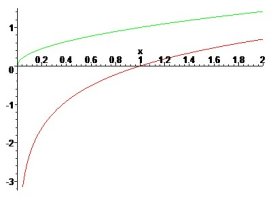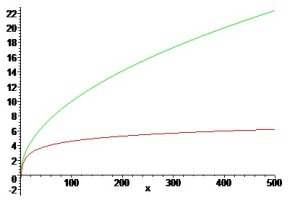logistic_guy
Full Member
- Joined
- Apr 17, 2024
- Messages
- 287
here is the question
Find the extrema of the function \(\displaystyle f(x) = \frac{x+1}{\ln(1-2x)}\).
my goal to this question isn't only to solve and get solution. i want to understand how to understand the graph of any function. i read on internet if i find the extrema of function i can understand the behavior of the function which help me approximate its graph. i discover if i know visualise graph i can solve the question quickly in my last 20 questions i solved. graphs or algebra in general is my weaknes and i'm working hard to understand.
where do i start? take derivative? or find domain? my think tell me of previous questions denomintor can't be zero this mean \(\displaystyle \ln(1 - 2x)\) can't zero. is my think correct so far?
Find the extrema of the function \(\displaystyle f(x) = \frac{x+1}{\ln(1-2x)}\).
my goal to this question isn't only to solve and get solution. i want to understand how to understand the graph of any function. i read on internet if i find the extrema of function i can understand the behavior of the function which help me approximate its graph. i discover if i know visualise graph i can solve the question quickly in my last 20 questions i solved. graphs or algebra in general is my weaknes and i'm working hard to understand.
where do i start? take derivative? or find domain? my think tell me of previous questions denomintor can't be zero this mean \(\displaystyle \ln(1 - 2x)\) can't zero. is my think correct so far?


